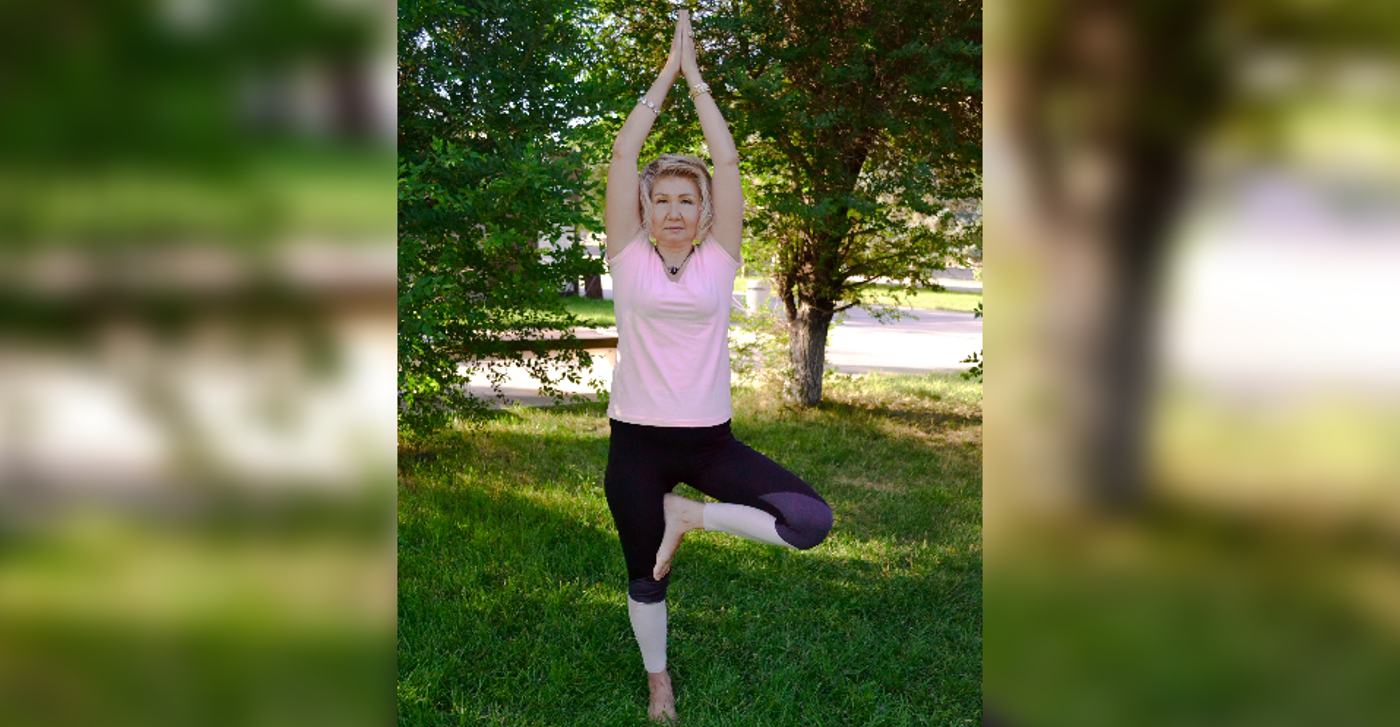Middle-aged people unable to stand on one leg for 10 seconds are almost twice as likely to die within the next decade, according to new research.
Scientists say the simple and safe balance test should become part of a routine health check for older adults.
Unlike aerobic fitness, muscle strength and flexibility, balance tends to be reasonably well preserved until the sixth decade of life when it starts to wane relatively rapidly.
Yet testing for balance isn’t normally included in health checks of middle-aged and older people, possibly because there is no standardized test and there is little hard data linking it to injuries or disease beyond falling, the researchers said.
The team in Brazil wanted to know whether a balance test might be a reliable indicator of a person’s risk of death from any cause within the next decade and whether a test should therefore be included in routine health checks.
They used participants from the CLINIMEX Exercise study, which was set up in 1994 to assess links between various measures of physical fitness and the risk of ill health and death from cardiovascular problems.
MORE: Hope for Migraine Sufferers: Clinical Trial Shows Benefits of Yoga and Meditation
The current study included more than 1,700 participants aged 51 to 75 (average age 61) at their first check-up, between February 2009 and December 2020. Around two-thirds (68 percent) were men.
Weight and several measures of skinfold thickness plus waist size were taken as were details of medical history. Only those with stable gait were included.
As part of the check-up, participants were asked to stand on one leg for 10 seconds without any additional support.
They were asked to place the front of the free foot on the back of the opposite lower leg, while keeping their arms by their sides and their gaze fixed straight ahead. Up to three attempts on either foot were permitted.
Around one in five (348 total or 20.5 percent) failed to pass the test and this rose in tandem with age, more or less doubling at five-year intervals from 51 to 55 onwards.
Among those 51-55, nearly five percent failed; for 56–60-year-olds, eight percent; for 61–65-year-olds, 18 percent; and for 66 to 70-year-olds, 37 percent.
LOOK: Yoga Could Be A Lifesaver For People With a Common Heart Condition
More than half of those aged 71 to 75 were unable to complete the test, meaning people in this age group were more than 11 times as likely to fail as those 20 years younger.
During a monitoring period of seven years, 123 (seven percent) people died.
Those deaths included: cancer (32 percent), cardiovascular disease (30 percent), respiratory disease (nine percent) and COVID complications (seven percent).
There were no clear temporal trends in the deaths, or differences in the causes, between those able to complete the test and those who weren’t able to do so.
However, the proportion of deaths among those who failed the test was significantly higher: 17.5 percent against 4.5 percent, an absolute difference of just under 13 percent.
In general, those who failed had poorer health. Many were obese and/or had heart disease, or had high blood pressure and too much fat in the blood.
Type two diabetes was three times as common in this group, around 38 percent against 13 percent in those who passed the test.
After accounting for age, sex, and underlying conditions, an inability to stand unsupported on one leg for 10 seconds was associated with an 84 percent heightened risk of death from any cause within the next decade.
“This is an observational study, and as such, can’t establish cause,” study author Dr. Claudio Gil Araujo, of Clinimex Medicina do Exercicio, Brazil, said.
RELATED: People Are Happier After Yoga Classes, But Try These Quirky Yoga Themes for Extra Fun
“As participants were all white Brazilians, the findings might not be more widely applicable to other ethnicities and nations.
“And information on potentially influential factors, including recent history of falls, physical activity levels, diet, smoking and the use of drugs that may interfere with balance, wasn’t available.”
“The 10 second balance test provides rapid and objective feedback for the patient and health professionals regarding static balance,” Dr. Araujo added.
“The test adds useful information regarding mortality risk in middle-aged and older men and women.”
This study was published in the British Journal of Sports Medicine.
STRETCH the Good News Further; Share It On Social Media…




















